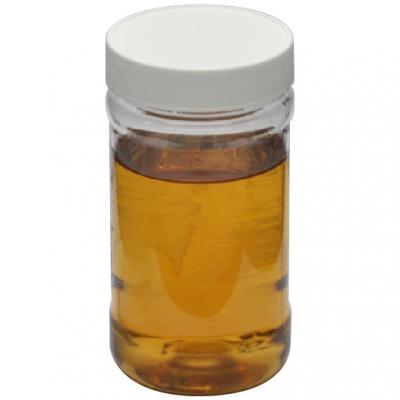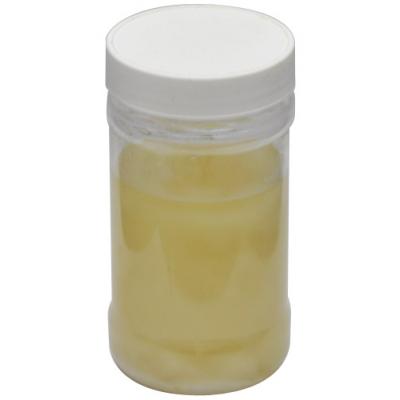SVHC is a highly focused chemical, they are among the key monitoring targets of about 30,000 chemical products in the EU market and 3 million to 5 million downstream textile, light industrial, electronic and pharmaceutical products. The textile chemicals and textile garments that have the content (i.e., the mass fraction) equal to 0.1 per cent and the annual output of more than 1 t must be notified, a strict evaluation and market access authorization is implemented. SVHC consists of four chemicals:
(1)1 and 2 carcinogenic, mutagenic and reproductive toxic chemicals (CMR);
(2) toxic chemical substances (PBT) for long-lasting stability and biological accumulation;
(3) chemical substances (vPvB) with high stability and high biological accumulation (vPvB);
(4) chemicals that seriously affect human health and environmental protection, such as environmental hormones.
The EU REACH law (EC1907/2006) believes that there are more than 900 kinds of SVHC in the market. In addition, in the 11 years since the implementation of the law, there are about 600 additional species that could be identified by collecting new data. Such a rule would determine about 1 500 SVHC. On June 30, 2008, the European chemical management agency (ECHA) released its first SVHC list, with 16 candidates for SVHC, on 28 October of the same year, 15 candidates for inclusion in the authorized use were officially announced on its website (table 3). This list and the regulations of EU can be used to analyze which SVHC is in textile AIDS.

1. Toxicological properties such as carcinogenicity, mutagenicity and reproductive toxicity of chemicals were tested by Ames and animal mutagenesis tests. For example, the study on the test of the gene variant of the cell gene (the mammalian cell gene variant test), UDS (the unpredetermined DNA synthesis test in vivo) and MN (i.e., micronuclear test in vivo), etc. Through the above tests, in the EU directive 2003/34/EC and 2003/36/ EC, the products that are prohibited from carcinogenesis, mutation and harm, with a total of 68 species and 43 species and 25species. In addition, there are 10 chemicals in the first SVHC list released by the European chemical management agency (CMR), There is not much CMR involved in these CMR, mainly include glycidyl (fiber modification agent, stabilizer of halogenated hydrocarbons), 2, 4 - dichlorophenol (sterilization mildew preventive, adhesive additives), of nitrotoluene preparation of fluorescent whitening agent (raw material) and sodium dichromate hydrate (antioxidant), butyl phthalate plasticizer () several kinds, such as, They are mostly environmental hormones.
However, the following textile auxiliaries and the above instructions are related to several toxic substances or have carcinogenicity, mutagenicity, teratogenicity, etc., which need to be highly concerned.
(1) 7 surfactants namely alkyl phenol polyoxyethylene ether, it's not just that they break down into the highly toxic alkylphenols, but also because they produce dioxane and other carcinogens like dioxane when they're in the process of preparing them. They cause variability in the human body and life. Linear alkyl benzene sulfonates (LAS) have certain teratogenicity and toxicity; Dimethylammonium chloride (DHTDMAC), DSDMAC, DSDMAC and DTDMAC are both more toxic. The insoluble calcium salts of EDTA and diethylene triamine pentaacetic acid (DTPA) are also more toxic.
(2) three flame retardants (N-heterocyclic propyl) phosphine oxide (TEPA), three - (2,3- dibromopropyl) phosphate (TRIS), polybrominated biphenyls (PBB), five bromo two phenyl ether (PBDPE), eight bromo two phenyl ether (OBDPE) and other halogen containing flame retardant has great toxicity and mutagenicity.
(3) 2,4,4 '- three chloro -2' - hydroxy two phenyl ether (THDE), 2- (4 '- thiazole benzimidazole) benzimidazole (TBI), 2- bromo cinnamaldehyde (BCA) are all carcinogenic, mutagenic and toxic in antibacterial deodorant finishing agent
(4) some auxiliary agents containing 24 carcinogenic aromatic amines,
Such as the polyurethane coating agent containing unreacted 2,4- two amino toluene or 4,4 '- two amino two benzene methane and the detergent LS containing unreacted ortho anisole
2. 12 persistent stable and bioaccumulation toxic chemicals officially released by the United Nations in 2005, namely, dieldrin, aldrin, endrin, chlordane, mirex, seven chlorine, six chlorobenzene, DDT, toxaphene, four chloro two benzene and dioxins, four chloro two benzofuran and polychlorinated biphenyls, and the list of 4 candidates listed on the website of the European Chemicals administration, which was officially released on October 28, 2008, is listed in the SVHC list,PBT, oxide-tri-butyltin, hexabromocyclododecane, C10~C13 chlorohydrocarbon, they are related to textile auxiliaries with at least four kinds of tetrachlorodibenzene and furan, tetrachlorodibenzene and dioxin, polychlorinated biphenyl, C10~C13 chlorinated hydrocarbon, there are also some PBT pesticides that may be brought in, and this is of great concern.
3. Fluorine surfactant PFOS and PFOA used in the preparation of water-repellent antifouling agents, they are confirmed to have high environmental stability and high bioaccumulation in the process of use or exposure, and are potentially dangerous to the human body.
They are the most difficult organic pollutants to degrade in the world today. They belong to vPvB. In addition, a list of candidate SVHC released by the European chemical management agency lists a type of vPvB, known as xylene, but has little relationship with textile auxiliaries.
4. According to the 70 banned environmental hormone statistics currently recognized in the international market, the environmental hormone involved in textile auxiliaries is much higher than that of dyestuff, and there are 26 initial confirmations. In addition to the CMR and PBT in the above-mentioned textile auxiliaries, there are alkylphenols, phthalates, 3- amino -1,2,4- triazole, tributyltin and triphenyltin, pentachlorophenol, benzophenone, related textile auxiliaries with soft finishing agent, antibacterial finishing agent, mothproof agent, coating system (slurry and adhesives and coating adhesive), adhesive, emulsifier, wetting agent, penetrating agent, spinning auxiliaries, detergent, scouring agent, desizing agent, dispersing agent, leveling agents, carrier, defoaming agent, leather degreasing agent, leather fatliquoring agent, leather finishing agent, silk degumming agent, degreasing agent, feather and crude oil.
To sum up, the possibility of SVHC in textile auxiliaries is mainly related to the EH and PFOS in textile auxiliaries and PFOA, AOX, FA, VOC, etc. And they are the basic safety requirements of textile agents, therefore, if the basic safety requirements of textile auxiliaries can be effectively achieved, the influence of the EU REACH regulation can be eliminated.



 English
English  日本語
日本語  Español
Español  tiếng việt
tiếng việt  Türkçe
Türkçe  ไทย
ไทย  українська
українська  हिंदी
हिंदी  বাঙালি
বাঙালি  اردو
اردو 


